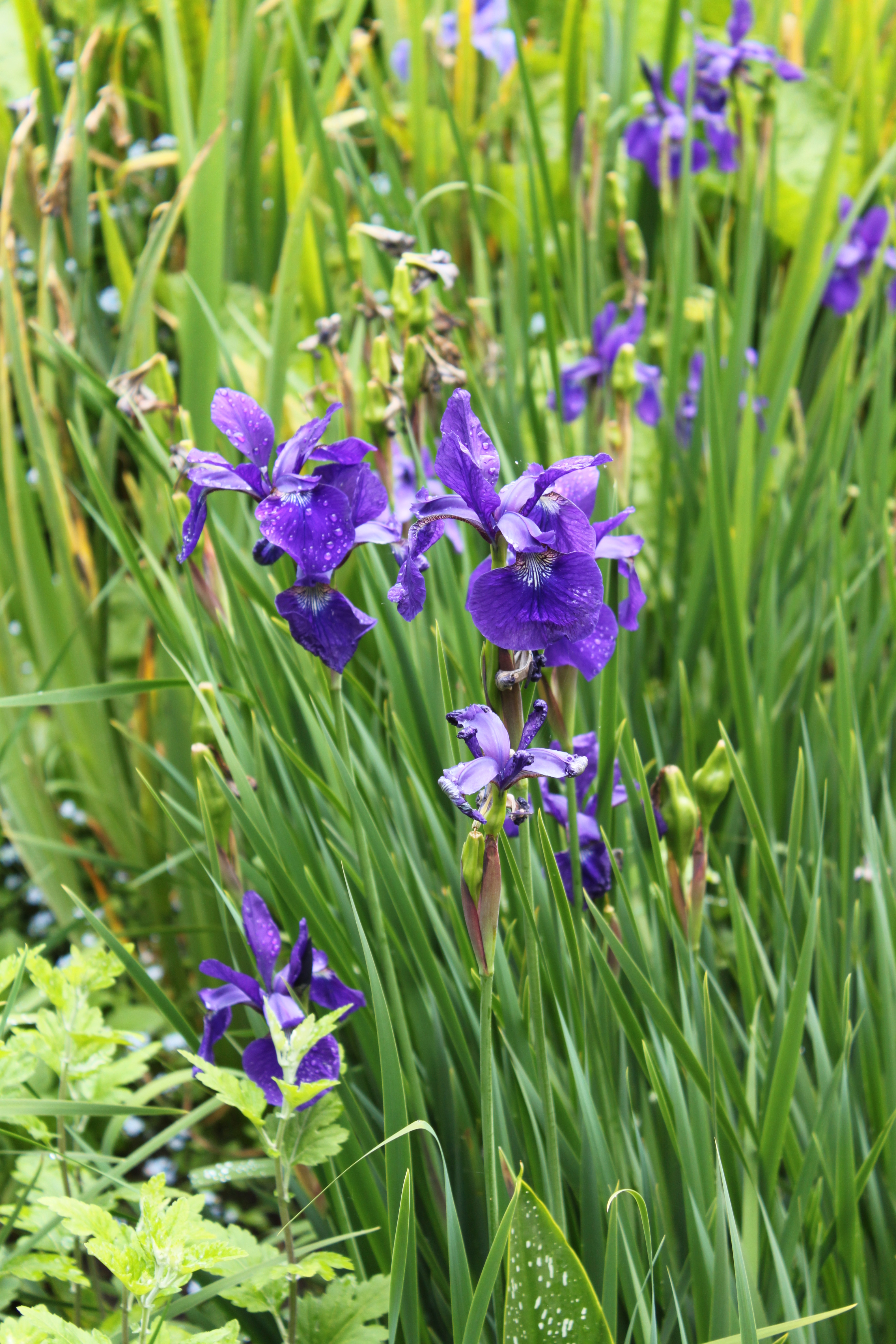Physical characteristics
Tall,
Flowers and foliage
Through early summer
Preferred site
This iris prefers acidic soil free of lime and rich in organic matter. It can grow in heavy clay soils and loves
During the growing season, it thrives in standing water (up to 15cm deep). However, in winter, it is intolerant of both standing water and boggy soils where it may rot. Siberian iris grows surprisingly well in garden soils as long they receive consistent moisture.
Preparation for planting
Plant when the soil is moist and warm in autumn or early spring so that a good root system develops to support vigorous new growth. Remove all perennial weeds. Incorporate bark compost or other organic material. Before planting, ensure the root ball is saturated and remove the planter pot with minimal root disturbance. Trim any broken roots and plant at the same level as in the container. Dig a hole twice the diameter of the root ball, press in and water once planted. Make sure
Planting too closely leads to spindly growth, poor flowering and eventual decline. In a well-planned
When planting a pond, make sure the crown is planted above water level to help prevent damage from ducks and pukeko. Cover area with wide-meshed wire netting to discourage birds. To suppress weeds and stabilise the ground, periodically apply a thick mulch of gravel.
Maintenance tips
Apply mulch
Ecological and biodiversity benefits
Birds eat the seeds.
Location at Auckland Botanic Gardens
TBC
Interesting facts and tips
Seed heads can be left on over winter as food for birds.


.jpg?width=1200&height=800&v=1d5389e441235d0)

.jpg?width=1200&height=1200&v=1d4024dceb89e50)

.jpg?width=1200&height=1200&v=1d5569224d63650)
 .jpg?width=1200&height=1200&v=1d4024df6ce2770)
.jpg?width=1200&height=1200&v=1d55676a892f2b0)
 .jpg?width=1200&height=1200&v=1d4024e3b65f7f0)